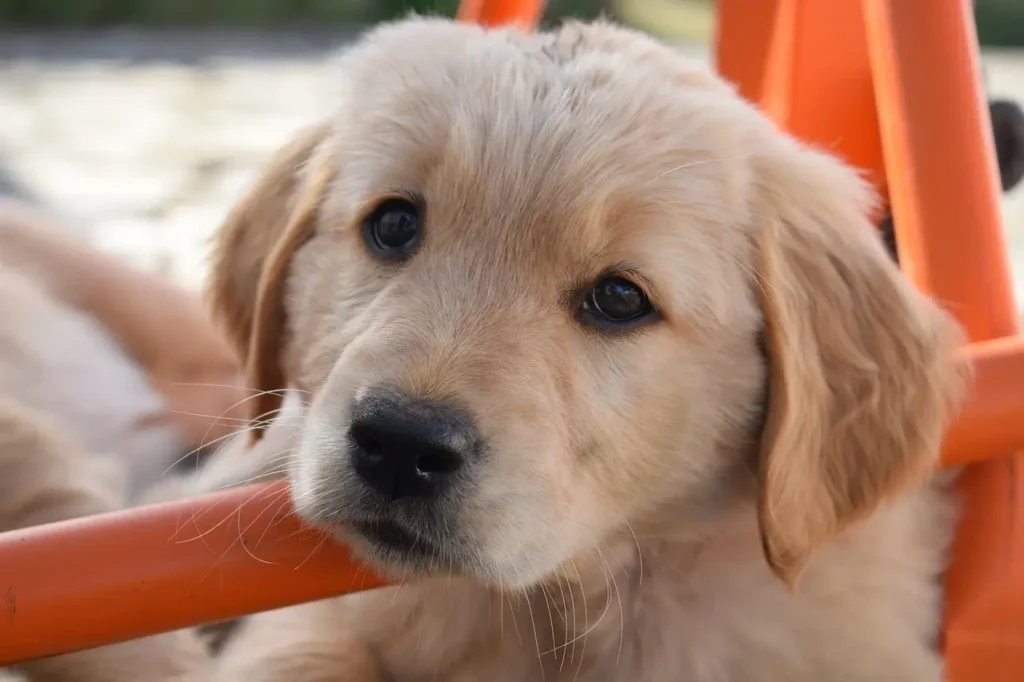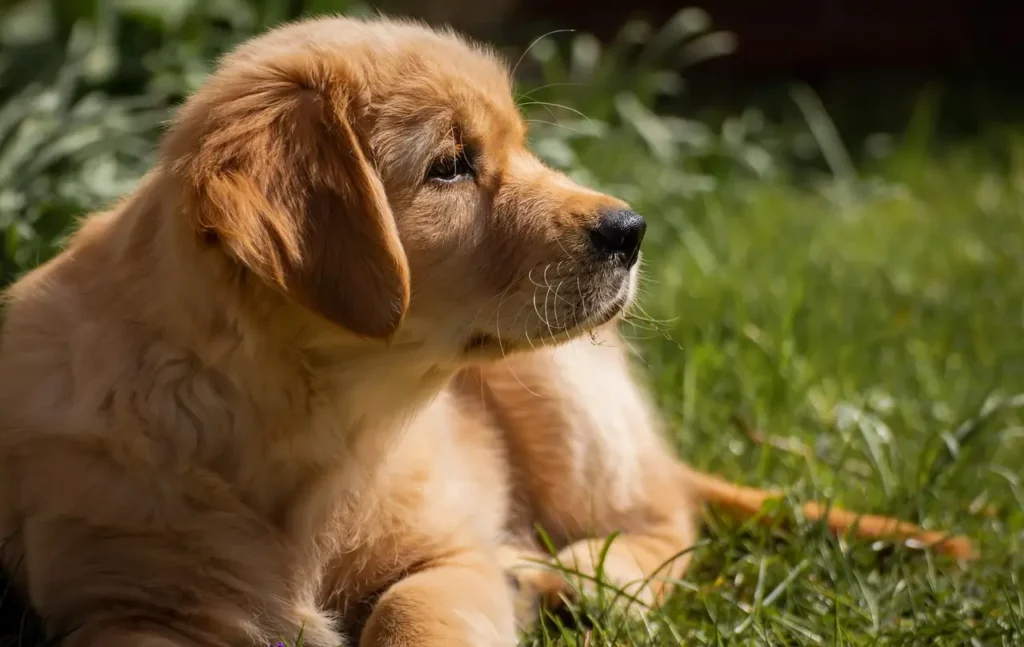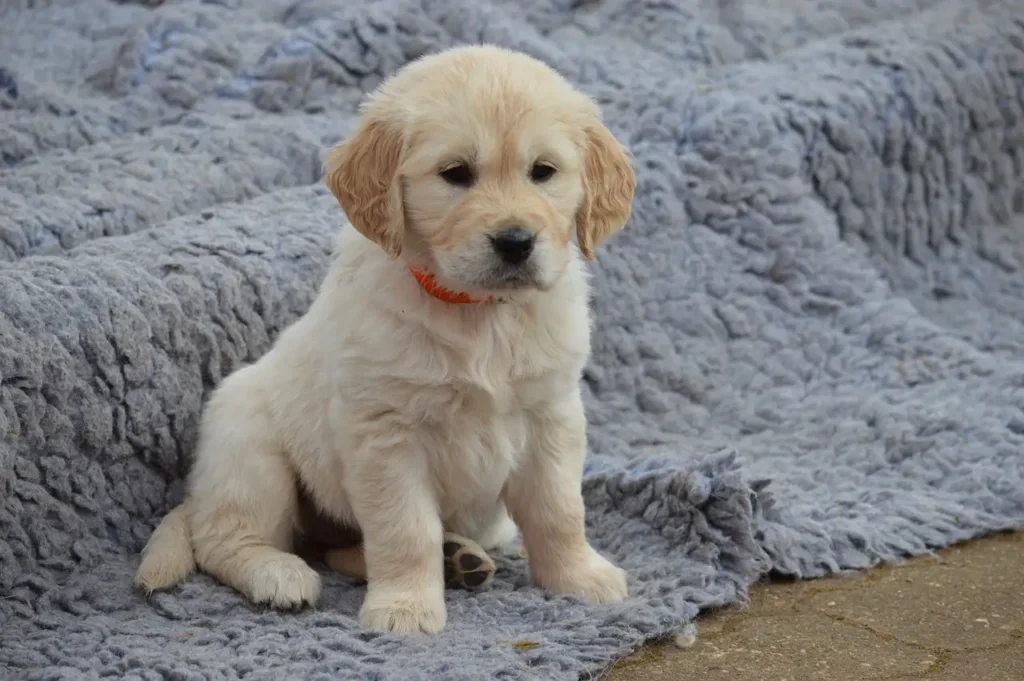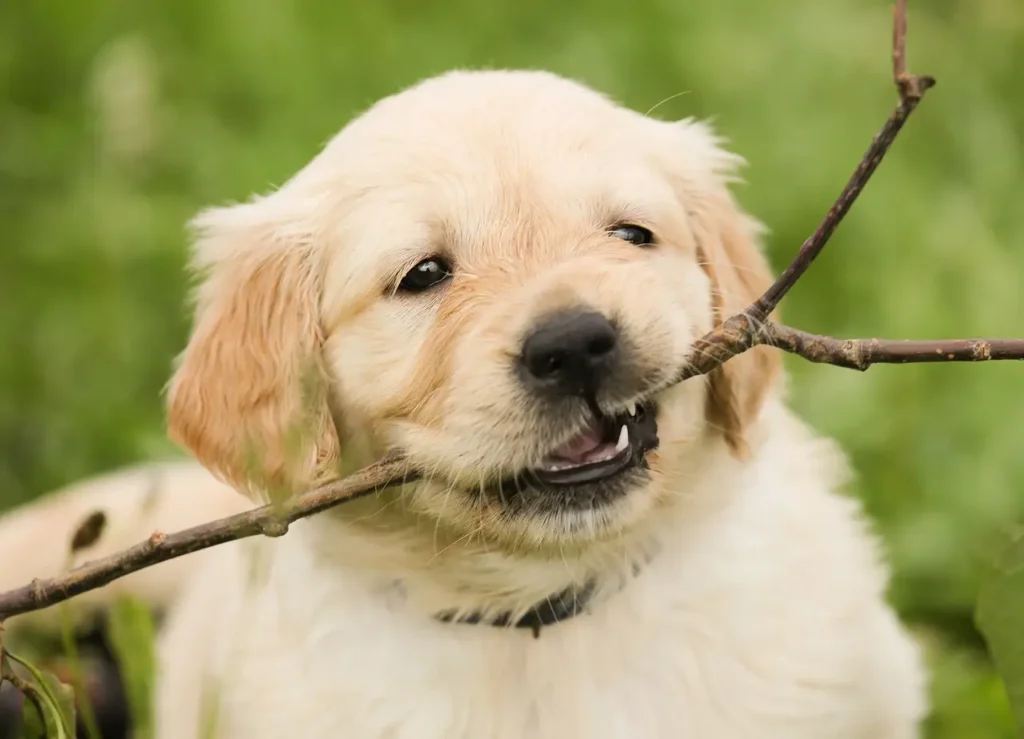Does a Golden Retriever Puppy’s Coat Change Color?
The short answer is yes, Golden Retriever puppies change color. Golden Retrievers’ coats will change color turning darker as they mature. You do not need to worry about it changing to a completely different color, such as black.
If this interests you, let’s examine the factors influencing their coats. Let’s embark on this colorful adventure together!
Puppy Coat Transformation: Step by Step
Have you ever wondered how a Golden Retriever puppy’s coat magically changes over time? It’s like watching a masterpiece unfold before your eyes.
At birth, these puppies are often born with lighter shades of fur that gradually transition into their iconic golden coats. Their puppy fluff gives way to a more dense and luscious adult fur as they grow.
During the first few weeks, you might notice subtle shifts in color as pigmentation develops. Some puppies may start with hints of cream or light red tones that evolve into the classic golden hue.
The transformation is usually complete by around six months old, revealing the stunning coat Golden Retrievers are famous for. It’s truly a remarkable process to witness!

Introduction to Golden Retriever Puppies
Golden Retriever puppies are joyfully wrapped in fluffy fur and energy. These adorable creatures steal hearts effortlessly, from their irresistible puppy dog eyes to their wagging tails. Known for their friendly demeanor and playful nature, Golden Retriever puppies make excellent family pets.
These little furballs are quick learners and thrive on positive reinforcement during training sessions. With their intelligence and eagerness to please, they can easily follow commands and tricks with the proper guidance. Socialization is critical for Golden Retriever puppies to grow into well-rounded adult dogs who get along with people and other animals.
As they explore the world around them with curiosity, Golden Retriever puppies develop strong bonds with their human companions. Their loving nature makes them loyal companions, ready for cuddles and playtime. In essence, welcoming a Golden Retriever puppy into your life means opening your heart to unconditional love and endless tail wags.

Standard Coat Colors of Golden Retriever Puppies
Golden Retriever puppies come in a few beautiful colors, from light cream to rich golden shades, from red Golden Retrievers to ones with a deep mahogany color that is simply stunning. The medium golden ones boast a luscious shade that exudes elegance. These puppies are beautiful on the outside and have charming personalities to match.
One standard color seen in these adorable pups is the classic golden hue that gives them their name. This luscious gold color often symbolizes the warmth and friendliness that Golden Retrievers are known for.
Another popular coat color among Golden Retriever puppies is a creamy white-like shade, adding elegance to their appearance. But do not be deceived pure blood Golden Retrievers are not white but instead a light golden or cream. Some puppies may have slight variations in their coat colors, such as darker or lighter patches, giving each pup a unique look.
Regardless of the shade they come in, one thing is sure—all Golden Retriever puppies are irresistibly cute and charming, with their fluffy coats and joyful personalities.

Factors that Can Affect a Golden Retriever Puppy’s Coat Color
Regarding the coat color of Golden Retriever puppies, several factors can influence how their fur looks as they grow.
-
- Genetics is the most significant deciding factor in determining a puppy’s coat’s initial color. The genes inherited from the parents can impact whether a puppy will have a light or dark hue.
-
- Age is another factor affecting a Golden Retriever puppy’s coat color. As puppies mature and transition into adulthood, their coats may undergo subtle changes in shade.
-
- Environmental elements like sunlight exposure and the foods puppies eat can also affect how vibrant or faded their coat appear.
-
- Grooming, such as regular brushing and bathing practices, can help maintain the luster and health of your golden pup’s fur.
-
- Proper nutrition is crucial for promoting healthy skin and coat development.
While various elements may influence how a Golden Retriever puppy’s coat looks, each adorable furry companion is unique in its beautiful way!
Do Golden Retriever Puppies Change Coat Color as They Grow?
As Golden Retriever puppies grow, their coat colors may undergo subtle changes. What starts as a fluffy, light-colored puppy coat can evolve into the rich golden hue that the breed is known for. This transformation process often occurs gradually over several months as the puppy matures.
Genetics play a significant role in determining a Golden Retriever’s final coat color. While some puppies retain their initial shade, others may experience variations due to inherited genes from their parents. Factors like diet, environment, and overall health can also influence the coat’s development.
It’s not uncommon for Golden Retriever puppies to darken in color as they reach adulthood. Some may even exhibit slight differences in shades between their outer and undercoat layers. Regular grooming and proper nutrition help maintain a healthy coat throughout this transition period.

Coat Type by Age
1. At eight weeks old, the Golden Retriever will have a light, fluffy coat. Their ears will typically be darker than the rest of their body and are commonly considered a helpful example of the adult color the puppy’s coat will grow into.
2. Feathering around the tail will start when the Golden Retriever puppy is about 3-4 months old.
3. By 18 months old, the puppy will have an undercoat with the new adult fur, usually darker than the puppy’s fur.
Not all Mature golden retriever coats are the same. Outdoor Golden Retrievers could have a thicker coat than a dog mainly kept indoors. Other factors, such as the year’s season or the dog’s genetics, could also be involved.
Steps of Coat Transformation
Typically, a Golden Retriever’s color changes in the following order:
-
- The fur on the ears gives us a glimpse of the mature color to come, as the ears often darken first.
-
- The back and tail usually follow the pattern set by the ears, gradually darkening in color.
-
- Unlike the rest of the coat, the fur on the chest and belly tends to remain lighter.
How to Care for Your Golden Retriever Puppy’s Coat
Caring for your Golden Retriever puppy’s coat is essential to maintaining health and beauty. Regular brushing can help remove loose fur and prevent matting. Use a slicker “pin” brush or rake comb for medium—to long-haired breeds.
Bathing your puppy should be performed as needed, using a gentle dog shampoo to avoid reducing its natural oils. Always dry your pup thoroughly after baths to prevent skin issues. Trimming the hair under their ears, around their paws, and under their tails can help keep them clean and tidy.
Regular vet check-ups ensure that a veterinarian will promptly examine any skin or coat issues. A balanced diet of fatty acids promotes healthy skin and a shiny coat. Stay alert for signs of allergies that could affect their coat condition.
Exercise is vital for overall health, including the condition of their coat. Engage in regular playtime and walks to keep them active and happy!

Conclusion: Golden Retriever Puppy’s Changing Coat
Golden Retriever puppies are indeed a marvel as their coats transform over time. Each stage reflects their growth and development, from the light, fluffy fur of puppyhood to the luscious golden coat of adulthood.
As pet owners, it’s essential to appreciate and care for the unique beauty of your Golden Retriever puppy’s changing coat. By understanding the genetics behind coat colors, being aware of factors that can influence color changes, and providing proper grooming and nutrition, you can help your furry companion maintain a healthy and radiant coat throughout their life.
Embrace the journey of watching your golden retriever puppy grow into its adult coat with love and admiration. Each shade shift tells a story of maturation and vitality, making every moment spent with your loyal canine friend even more special. Cherish every stage of this captivating metamorphosis, for in the end, it’s not just about the color but the bond you share with your beloved golden retriever puppy.
Ready for a Golden Retriever Puppy
If you are looking to bring a new furry friend into your home, consider contacting Golden Crest Retrievers for the opportunity to welcome one of their adorable Golden Retriever puppies.
Golden Retrievers are known for their friendly and gentle nature and are excellent family pets and companions.
Whether you are seeking a playful companion or a loyal friend, Golden Crest Retrievers is a Golden Retriever breeder in Colorado can help you find your puppy to fit your lifestyle. Contact them today if you are ready to take the next step in adding a new member to your family!
Frequent Asked Questions
Do Golden Retriever puppies turn the color of their ears?
In Golden Retriever circles, there is a theory that the color of a puppy’s ears will determine a dog’s final color. The “look at the ears” tip is frequently accurate enough that this theory is a helpful guide, but it isn’t guaranteed.
Observing a puppy’s ears can give you an idea of its coat color when growing up, but remember that coat color genetics can be unpredictable.
At what age do Golden Retrievers get their full coat?
Golden Retrievers typically achieve their full adult coat between 12 and 18 months. During this time, their coats will become thicker and gain their distinctive feathering. Puppies initially have a softer, fluffier coat that gradually transitions to the adult coat.
At what age do puppies change color?
You may see darker hair developing when your puppy is 3-4 months old. The signature feathering the Golden Retriever is known for will appear around 6-7 months of age.
Do Golden Retriever puppies get darker with age?
Yes, their adult coat will grow darker than their puppy fluff. It will generally be darkest on their ears, back, and sides.
You Might be Interested in These Articles.
Difference Between American versus English Golden Retrievers
Why We Choose Not to Remove Dewclaws
